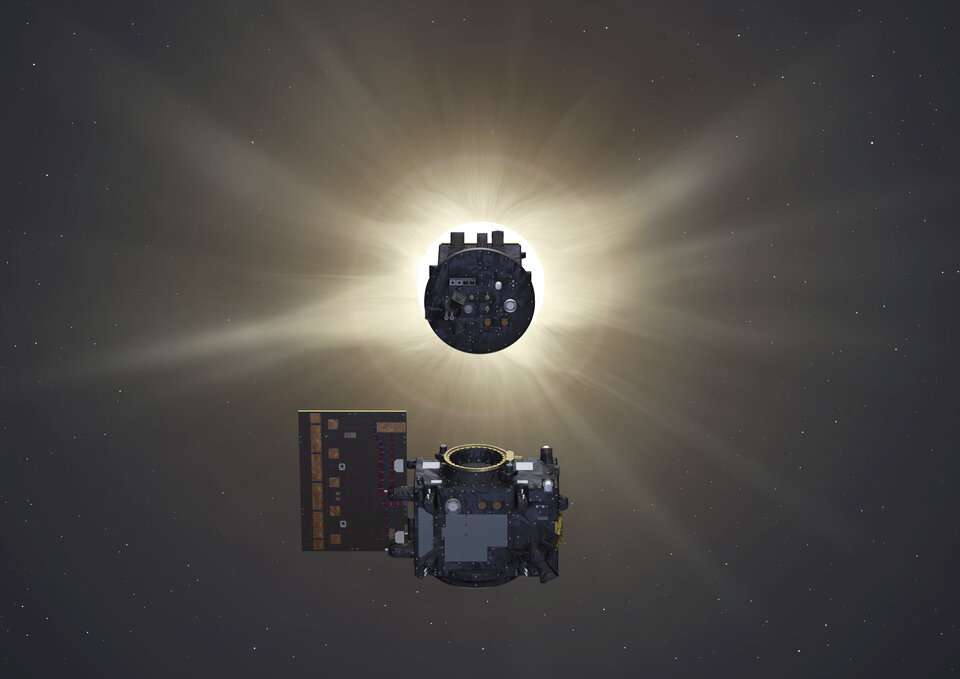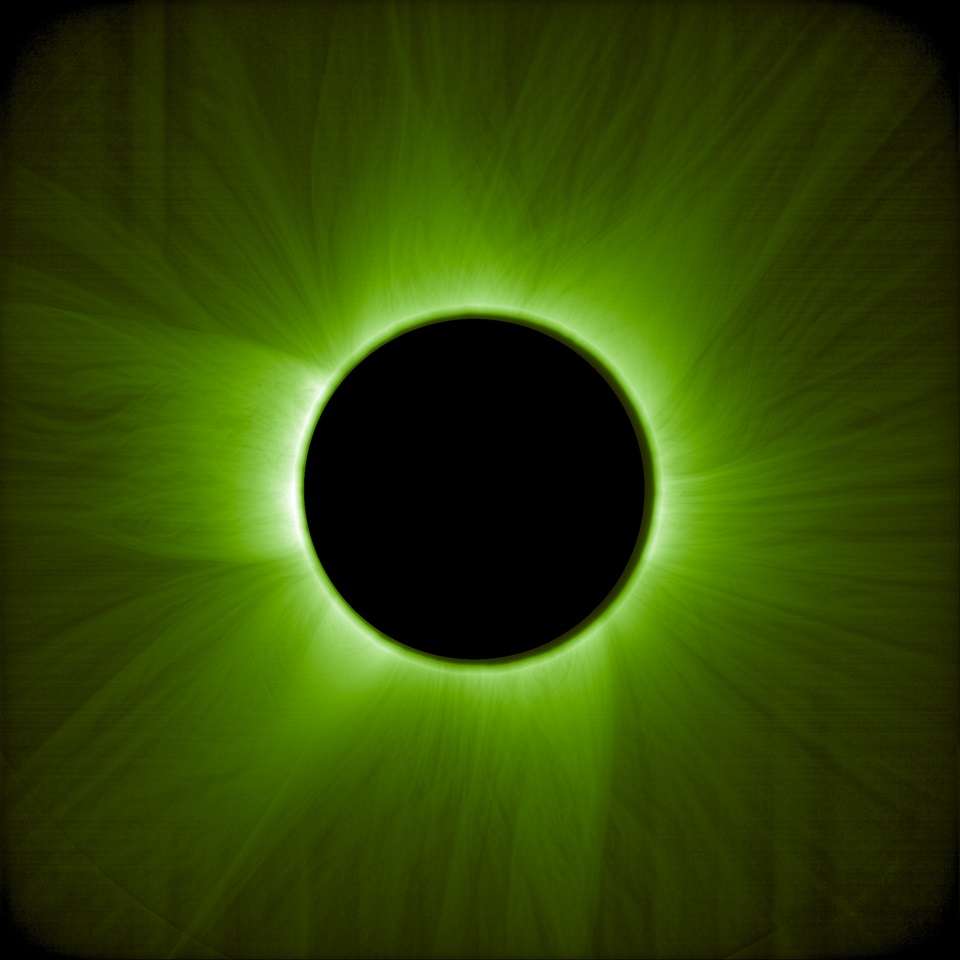The Volokh Conspiracy
Mostly law professors | Sometimes contrarian | Often libertarian | Always independent
That's No Moon

From the European Space Agency today, "Proba-3's first artificial solar eclipse":
This March, Proba-3 achieved what no other mission has before – its two spacecraft, the Coronagraph and the Occulter, flew 150 metres apart in perfect formation for several hours without any control from the ground.
While aligned, the pair maintain their relative position down to a single millimetre – an extraordinary feat enabled by a set of innovative navigation and positioning technologies.
Demonstrating the degree of precision achieved, the two spacecraft use their formation flying time to create artificial total solar eclipses in orbit – they align with the Sun so that the 1.4 m large disc carried by the Occulter spacecraft covers the bright disc of the Sun for the Coronagraph spacecraft, casting a shadow of 8 cm across onto its optical instrument, ASPIICS.
And here's the actual corona, with the full occulting:

Editor's Note: We invite comments and request that they be civil and on-topic. We do not moderate or assume any responsibility for comments, which are owned by the readers who post them. Comments do not represent the views of Reason.com or Reason Foundation. We reserve the right to delete any comment for any reason at any time. Comments may only be edited within 5 minutes of posting. Report abuses.
Please to post comments




Cool!
That's fantastic. It's be a great way to study CME's in greater detail.
Nice achievement. And a great tool to study the corona. But to justify the headline, you would have to scale it up, with the occulter far enough from the camera to share sharp focus with the corona. I have no idea whether that diffused edge matters at all to the scientists.
Those who find this fascinating may want to check out LISA, a space-based LIGO follow-on intended to significantly extend our capabilities in gravitational wave astronomy (including e.g. possible observation of primordial gravitational waves) targeted for mid-2030s launch.
LISA will employ 3 spacecraft in heliocentric orbit spaced 2.5 million km from each other. Its observations will rely on the capability to measure changes in the distance between 3 test masses (one floating freely within each craft) to picometer precision.
They will employ nano-newton thruster arrays built into electronic chips. This continues the astonishing technical achievements needed to study gravity waves.
Ah, electrospray thrusters. It's an interesting technology, and I've seen proposals to scale it up to provide significant thrust for interplanetary missions, the Brane craft.
While the immediate proposal is just for orbital debris collection, you could deploy a large brane craft as a sort of high thrust, limited delta v solar sail.
Uses what are called "ionic liquids", which are complex salts that combine a really wide liquid temperature range with very low vapor pressure, they're an ideal working fluid for electrospray thrusters.
I still can't believe they made it to the moon with slide rules.
I still can't believe they got to the moon using slide rules.
In addition to slide rules, they had the Apollo guidance computer, and multiple radio links (for voice, telemetry, commands, TV) to Mission Control. (for more on the computer, see: https://www.youtube.com/watch?v=2KSahAoOLdU).
This technology will be important when propulsion technology advances to the point where we can launch probes out to the Sun's gravitational focus.
Mass bends light, and any mass will take light from a point source exactly opposite the observer, and bend it into an "Einstein ring", which can be used as an ultra high magnification lens.
The catch is, you have to get far enough from the massive body that the Einstein ring isn't occulted by the body itself. For the Sun, that's about 550 astronomical units. (Voyager after all these years is only at 166.4 au. It really needs better propulsion to accomplish in a human lifetime.
And then you need exactly this sort of artificial eclipse to hide the light from the Sun, to make it work.
Am I the only one wondering if these were launched from inside a volcano?
That's no moon . . . it's a space stationary.
So now we know Professor Volokh is into the occult. Which is probably a protected practice under California employment law.